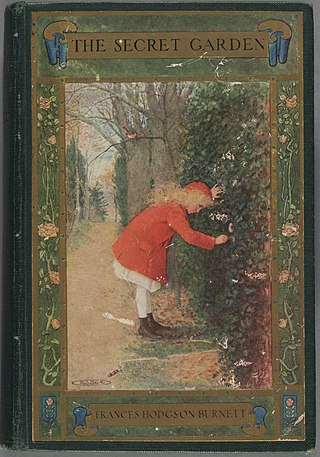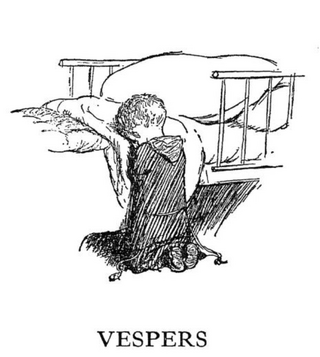
Alan Alexander Milne was an English writer best known for his books about the teddy bear Winnie-the-Pooh, as well as for children's poetry. Milne was primarily a playwright before the huge success of Winnie-the-Pooh overshadowed all his previous work. Milne served in both world wars, as a lieutenant in the Royal Warwickshire Regiment in the First World War and as a captain in the Home Guard in the Second World War.

Ernest Howard Shepard was an English artist and book illustrator. He is known especially for illustrations of the anthropomorphic animal and soft toy characters in The Wind in the Willows and Winnie-the-Pooh.

Philip Henry Gosse, known to his friends as Henry, was an English naturalist and populariser of natural science, an early improver of the seawater aquarium, and a painstaking innovator in the study of marine biology. Gosse created and stocked the first public aquarium at the London Zoo in 1853, and coined the term "aquarium" when he published the first manual, The Aquarium: An Unveiling of the Wonders of the Deep Sea, in 1854. His work was the catalyst for an aquarium craze in early Victorian England.

Christopher Robin is a character created by A. A. Milne, based on his son Christopher Robin Milne. The character appears in the author's popular books of poetry and Winnie-the-Pooh stories, and has subsequently appeared in various Disney adaptations of the Pooh stories.

Sir Edmund William Gosse was an English poet, author and critic. He was strictly brought up in a small Protestant sect, the Plymouth Brethren, but broke away sharply from that faith. His account of his childhood in the book Father and Son has been described as the first psychological biography.

Frances Eliza Hodgson Burnett was a British-American novelist and playwright. She is best known for the three children's novels Little Lord Fauntleroy, A Little Princess (1905), and The Secret Garden (1911).

Richard Monckton Milnes, 1st Baron Houghton, FRS was an English poet, patron of literature and a politician who strongly supported social justice.

Winnie-the-Pooh is a 1926 children's book by English author A. A. Milne and English illustrator E. H. Shepard. The book is set in the fictional Hundred Acre Wood, with a collection of short stories following the adventures of an anthropomorphic teddy bear, Winnie-the-Pooh, and his friends Christopher Robin, Piglet, Eeyore, Owl, Rabbit, Kanga, and Roo. It is the first of two story collections by Milne about Winnie-the-Pooh, the second being The House at Pooh Corner (1928). Milne and Shepard collaborated previously for English humour magazine Punch, and in 1924 created When We Were Very Young, a poetry collection. Among the characters in the poetry book was a teddy bear Shepard modelled after his son's toy. Following this, Shepard encouraged Milne to write about his son Christopher Robin Milne's toys, and so they became the inspiration for the characters in Winnie-the-Pooh.

Emily Sarah Tennyson, Baroness Tennyson, known as Emily, Lady Tennyson, was the wife of the poet Alfred, Lord Tennyson, and an author and composer in her own right. Emily was the oldest of three daughters, raised by a single father, after her mother Sarah died when she was three years old. Her father, a successful lawyer, was devoted to her and her sisters and ensured that they had a good education. She met Alfred when she was a girl, but they did not develop a romantic relationship until his brother Charles married her sister Louisa. It was thirteen years before they would marry, due to her father's concerns about the degree to which Tennyson could provide for her on a poet's salary. When his career became more successful, Emily and Alfred married.

The Secret Garden is a novel by Frances Hodgson Burnett first published in book form in 1911, after serialisation in The American Magazine. Set in England, it is one of Burnett's most popular novels and is seen as a classic of English children's literature. Some of Burnett's other popular novels include Little Lord Fauntleroy, The Lost Prince and A Little Princess. Several stage and film adaptations have been made of The Secret Garden. The American edition was published by the Frederick A. Stokes Company with illustrations by Maria Louise Kirk and the British edition by Heinemann with illustrations by Charles Heath Robinson.

Christopher Robin Milne was an English author and bookseller and the only child of author A. A. Milne. As a child, he was the basis of the character Christopher Robin in his father's Winnie-the-Pooh stories and in two books of poems.

Father and Son (1907), originally subtitled "A Study of Two Temperaments", is a memoir by the poet and critic Edmund Gosse, initially published anonymously. Gosse had already published a biography of his father in 1890.

Winnipeg, or Winnie, was the name given to a female black bear that lived at London Zoo from 1915 until her death in 1934. Rescued by cavalry veterinarian Harry Colebourn, Winnie is best-remembered for inspiring the name of A. A. Milne and E. H. Shepard's character, Winnie-the-Pooh.

Harry D. Colebourn was a Canadian veterinarian and soldier with the Royal Canadian Army Veterinary Corps best known for donating a bear cub named "Winnie" to London Zoo. Winnie later inspired the creation of A. A. Milne's famous children's book character Winnie-the-Pooh.
Nationality words link to articles with information on the nation's poetry or literature.
The Royal Literary Fund (RLF) is a benevolent fund that gives assistance to published British writers in financial difficulties. Founded in 1790, and granted a royal charter in 1818, the Fund has helped an extensive roll of authors through its long history, from the most famous to the most obscure, whose cases are judged to be deserving. It also operates a Fellowship scheme, placing established writers in universities to encourage writing skills, and to monitor standards of writing in the higher education world.

Winnie-the-Pooh is a fictional anthropomorphic teddy bear created by English author A. A. Milne and English illustrator E. H. Shepard. Winnie-the-Pooh first appeared by name in a children's story commissioned by London's Evening News for Christmas Eve 1925. The character is inspired by a stuffed toy that Milne had bought for his son Christopher Robin in Harrods department store, and a bear they had viewed at London Zoo.
Emily Bowes Gosse was a prolific religious tract writer and author of evangelical Christian poems and articles.

Mark Burgess is best known as an English author and illustrator of children's literature. He has illustrated books by Tony Bradman and Martin Waddell. Among his most recent assignments, he illustrated Return to the Hundred Acre Wood, the authorized sequel of Winnie-the-Pooh.

"Vespers" is a poem by the British author A.A. Milne, first published in 1923 by the American magazine Vanity Fair, and later included in the 1924 book of Milne's poems When We Were Very Young when it was accompanied by two illustrations by E.H. Shephard. It was written about the "Christopher Robin" persona of Milne's son Christopher Robin Milne. It predates the creation of Winnie-the-Pooh.















